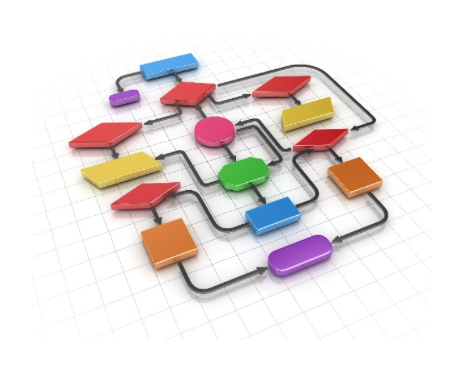Are Safety Signals Overlooked in Clinical Trials?
In this interview, Jennifer Prichard, MD, Medical Monitor at Atlantic Research Group, and Hunter Walker, CTO at Atlantic Research Group will discuss challenges with existing medical monitoring processes, and how new technologies can help improve efficiency.
Medical Monitors encounter a variety of challenges in their roles, and they do whatever it takes to detect and report safety signals. With the increasing scale of study data and a growing number of clinical trial databases, medical monitors face additional pressures crunching large data sets to detect and report safety signals, which is resource exhaustive for biopharmaceutical enterprises and CROs. Nonetheless, with the advent of new data visualization and workflow technologies, medical monitors can focus on patient safety and signals detection without having to learn new data wrangling skills. In this interview, Jennifer Prichard, MD, Medical Monitor at Atlantic Research Group, and Hunter Walker, CTO at Atlantic Research Group (a CRO) will discuss challenges with existing medical monitoring processes, and how new technologies can help improve efficiency.
Moe Alsumidaie: What challenges currently exist with safety signal detection processes and workflows?

Jennifer Prichard: As a medical monitor, one of the biggest challenges is viewing medical information across multiple sources, which makes it time consuming to find answers to specific questions. For example, I may be given clinical information from the clinical database, safety information from the safety database, and lab information from the laboratory site; if I want to know the lab value ranges for a specific adverse event, searching through the data can take a long time. Additionally, it takes a lot of energy and focus to keep track of all the systems and it is inefficient to switch back and forth between the different sources. It can be challenging to grasp the big picture while trying to manually visualize all the safety events in a study when multiple systems are involved.
Hunter Walker: From a managerial standpoint, the biggest challenge is difficulty in streamlining processes, and workflows. For example, reconciling safety events from the safety system and EDC, and then compiling them in a format that is acceptable by regulatory authorities is a very time-consuming undertaking. Since both safety and EDC systems are not integrated, it is very difficult to streamline the processes and, hence, it is inefficient. Moreover, there are challenges with efficiently querying safety events; particularly pertaining to limitations in visualizing data from numerous databases.
MA: Is there potential that safety signals could be missed?

JP: As a medical monitor that is your biggest concern. I can say, working for an established medium-sized CRO, we have solid SOPs, so no safety event goes missed or unreported, however, I can run across challenges with efficiently detecting safety signals across studies. For example, if there are different EDC systems across multiple studies, it can be more difficult to see potential signals because I am viewing the data in disparate ways. I must filter for signals separately within each of the databases I am using, then aggregate that data. It’s not always user friendly to do that; the process is complex, time consuming, and can be difficult to aggregate; when I am done with my analysis, it can be difficult to generate meaningful visual representations of the data that contain useful trends and outliers. It would be much easier and more efficient to look for signals if all the information I needed was in one place, with real-time visual data representations in a platform that would enable me to easily query the data.
To elaborate, recently there was a study with some concern about virology lab results and AE data. In going back to investigate further, I had to go through the clinical and lab databases (two separate databases). Toggling back and forth between each individual’s lab data on a given date and the corresponding AE, was very cumbersome. In addition to inefficiencies, which can be costly for our clients, there is always concern that a manual process can introduce potential for error. A system that enables cross-database visualization would support better quality reviews and may also reduce the overall cost for medical monitoring services.
MA: Why do these challenges still exist if visualization tools, such as Spotfire, are widespread in the industry?
HW: This is because we need tools that are not complex, customized to medical monitoring, and contain workflows. There are specific needs relating to safety querying and resolution that general visualization tools cannot address. In the current implementation of our system, we have not established an electronic safety management module, which is a direct connection between our safety system and FDA’s gateway. Currently, we submit an E2B file electronically, but we must go to the FDA's website to upload this file. As the volume increases, we are prepared to add the capability of integrating with FDA’s database, but, since our safety and EDC systems are not aggregated, it creates delays in processing as well as the ability to put into a format that we can then submit to regulatory agencies.

JP: For medical monitors, there are workflow challenges with existing tools, which results in inefficiencies. For example, during interim data analyses, queries are generated through the review process conducted by a medical monitor. The next time that data comes back as interim data, those query points may have been resolved, but there is no way for the medical monitor to easily see those updates. So, the medical monitor must review those data points all over again and the feedback loop doesn’t get closed.
HW: To add, medical monitors are an expensive resource to waste. Anything you can do to help medical monitors focus on what they need to find is going to pay for itself in the long-term. We need to address what the medical monitor needs to see and present it to them at the right time, and in a visually efficient form to not overwhelm them and so they are not lost sifting through irrelevant data. It would be helpful to have easier ways to navigate through the data and establish workflows that can then be packaged in a way that sends information back to the clinical databases in case there needs to be some sort of dialogue through a query with the site about that safety event, or getting it ready to be submitted to an agency.
MA: How could new technologies and tools address those challenges?
JP: Systems integration would be a big benefit and robust filtering capabilities are essential. For example, a system, such as Signals Medical Review that incorporates workflows improves the efficiency of the process. The more streamlined and efficient the process is, the more confident you are in the process. Such systems could be very helpful for pharmacovigilance safety signal detection as well by allowing for better visualization of the data. For example, say, you notice that hypoglycemia is a common AE. If you are able to customize the filter and really visualize the data, you may see that it happens at the 12-hour mark consistently across subjects. Then you start to think differently about that AE as compared to if you had found hypoglycemia in an erratic fashion via Excel spreadsheets or non-integrated and non-specific visualization systems. Technology and visualization systems that are designed for medical monitoring generate safety signals, whereas a lack of integrated systems can create noise. If you have a system that can show you the temporal relationship of a symptom to dose, or patient age or concomitant medication, then you may differentiate that as a safety signal. Right now, I can analyze the data, but it takes looking at multiple different sources, making the task extremely inefficient. A system where I can quickly view and compare concomitant medications, subject demographics, and time to dose in the same place and with a visual representation, would make it easier for me to separate signal from noise. Built-in workflows to allow for easy identification of new or different information would decrease duplicative review efforts and the capability to raise and track queries would improve cross-functional efficiency.
HW: A technology system that incorporates both the ability to flexibly view visualizations from numerous databases with workflows, enables medical monitors to more efficiently review, query, and resolve medical signals. The workflows help them better track the outcomes of those open medical review queries. Implementing having such technologies lead to better communication with sponsors, since you can provide sponsor user access to the databases and not have to send reports; sponsors can conduct their own analyses. Such technologies not only improve efficiency on CROs, but, also enhance the communication channels between sponsors and CROs.
Moe Alsumidaie, MBA, MSF is Chief Data Scientist at Annex Clinical, and Editorial Advisory Board member for and regular contributor to Applied Clinical Trials.